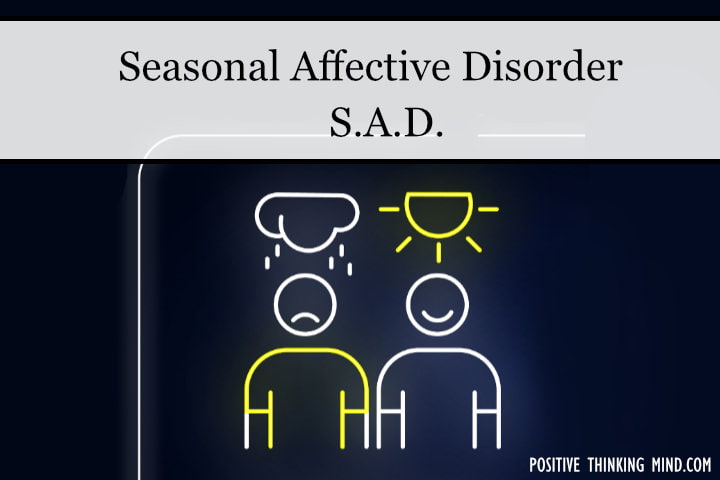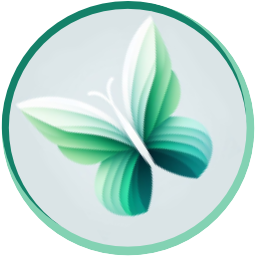Seasonal Affective Disorder
It’s January, and it’s cold outside.
Now we all know that in the northern hemisphere, December 21st is the shortest day of the year and is the darkest day of the year.
The sun shines for the least amount of time, and it gets dark so early. It’s cold outside, and things can be dreary and downright depressing.

This post contains affiliate links
On the bright side of things, each day after the 21st, you’ll gain a few seconds of light, and it will slowly get brighter, and before you know it, summer will be here, and we can be outside and have fun.
I’m using this as an analogy to our lives where minor changes like the way we think or learning a new skill can slowly create a massive difference in our lives over time.
I feel great in the summer months because I’m getting plenty of sunshine outside, and in the winter months, like January through March, I’m indoors mostly because I’m not too fond of the cold.
Before we get to seasonal affective disorder, I wanted to mention a company called Online-Therapy quickly. It’s where you can get professional counseling at an affordable rate, all in the comfort of your own home.
I like online therapy because it’s not just a chat; it’s a complete toolbox to better your mental health.
They’ll help you find new ways and strategies and support you along the way with whatever difficulties you’re facing.
You’ll have live sessions, worksheets, a journal, an activity plan, and so much more at your fingertips.
So, if you need a little extra support, check out Online-Therapy and the services they can offer you.
Seasonal Affective Disorder
Ok, back to Seasonal Affective Disorder. Seasonal Affective Disorder, or S.A.D. for short, is often referred to as having the winter blues or winter depression and is a type of depression.
Symptoms often begin in the fall or early winter months, but most people don’t typically notice the impact on their lives until the middle of winter.
They become depressed, moody, and less energetic with seasonal affective disorder.
S.A.D. is more than just “winter blues.” The symptoms can be distressing and overwhelming and can interfere with daily functioning. You may have trouble sleeping, become irritable, feel hopeless, gain weight, have appetite changes, and have cravings for high-carb foods.
S.A.D. has been linked to a biochemical imbalance in the brain prompted by shorter daylight hours and less sunlight in winter. As seasons change, people experience a shift in their internal biological clock or a circadian rhythm that can cause them to be out of step with their daily schedule. S.A.D. is more common in people living far from the equator, with fewer daylight hours in the winter.
Seasonal Affective Disorder affects an estimated 10 million Americans, with women four times more likely to be diagnosed than men.
Anyone who works indoors most likely sees the limited sun and daylight hours. Temperatures are at or below freezing, so you don’t spend much time outside. Winter can be pretty depressing.
What I’ve recently learned and most people don’t know is that seasonal affective disorder can also affect people in the spring.
They tend to have lots more energy, which can be manic at times; they’ll feel agitated and anxious.
People affected by bipolar disorder feel depressed in the winter months, and spring and summer bring on mania.
I recently read the book Educated by Tara Westover and recommend reading her memoir. You can find a link to the book in the description. In the book, Tara talks about her father, who showed symptoms of bipolar disorder.
The family lives in Idaho, and her father would slip into a deep depression during the winter months. The family would drive to southern Arizona so her father could sit out on the porch and take in the sunshine helping to alleviate some of his symptoms.
On the way back to Idaho, her father would be very irritable and impatient, all signs of mania.
With seasonal affective disorder, people tend to be more depressed in winter, feel down, and have less energy because they’re getting less sunlight.
Now all this got me thinking, why do we seem to have such low energy in the winter months?
Our modern society of always being on the go doesn’t consider any of this. We begin to think we’re some pretty messed up people with negative thoughts and impulses.
Many people turn to anti-depressants to help them cope with their feelings.
So I started thinking about our ancestor’s thousands of years ago when they lived in caves or little huts trying to survive.
They would hunt and forage, gathering food and building up their fat reserves during the year, and in the winter months, they would sleep most of the night trying to keep warm and survive.
If they had lots of energy, they would burn more calories and deplete their food reserves. They might drive each other nuts, or you might drive yourself crazy because you’re confined to an area trying to stay warm during the long dark winter months.
If we didn’t have warm homes, an eight-hour workday all year, school schedules, all things that are a part of our modern life, we might not notice the symptoms of seasonal mood disorders.
We’d be hibernating, so to speak, and trying to stay warm and sleeping a lot, and all these “symptoms” would serve as a function to our survival.
Unfortunately, our modern lives and busy schedules don’t allow us to stay home.
There is, however, something you can do at home called light therapy.
Light therapy is artificial light that mimics the sun and helps produce serotonin, the feel-good hormone, and melatonin that calms you and enables you to sleep.
Light therapy is a way to treat seasonal affective disorder and certain other conditions by exposure to artificial light.
Light therapy has been shown to help alleviate symptoms of seasonal affective disorder.
Here are three key elements for the effectiveness of light therapy
Light therapy is most effective when you have the proper combination of light intensity, duration, and timing.
- Intensity. The intensity of the lightbox is recorded in lux, which is a measure of the amount of light you receive. For S.A.D., the typical recommendation is to use a 10,000-lux light box at a distance of about 16 to 24 inches.
- Duration. With a 10,000-lux lightbox, light therapy typically involves daily sessions of about 20 to 30 minutes. But a lower-intensity lightbox, such as 2,500 lux, may require longer sessions. Check the manufacturer’s guidelines and follow your doctor’s instructions. They may suggest you start with shorter sessions and gradually increase the time.
- Timing. Light therapy is most effective for most people when it’s done early in the morning after you first wake up. Your doctor can help you determine the light therapy schedule that works best for you.
Light therapy probably won’t cure seasonal affective disorder, nonseasonal depression, or other conditions. But it may ease your symptoms, increase your energy levels, and help you feel better about yourself and life.
Light therapy can start to improve symptoms within just a few days.
A few tips for getting the most out of light therapy
- Get the right lightbox
- Be consistent
- Track the timing
- If symptoms persist, you may need to include other treatment
I recently started using a therapy lamp from Carex for about fifteen minutes every day and noticed a considerable improvement in my mood.
A friend of mine started using this therapy lamp and recommended I try it, and I decided to give it a shot, and I’m so glad I did.
You don’t have to buy this exact lamp, do a google search, look on Amazon or go to your local store.
Just be sure you use it at a comfortable distance, and it has the right amount of lux.
You’ll see a bunch of cheap lamps on Amazon that are small, not as effective as the larger ones, but it’s better than nothing.
I love this lamp and wanted to recommend it because it’s curved and shines a light toward you from a downward angle.
As always, it’s best to ask your doctor or mental health provider if light therapy is a good option for you. Ask whether you need to take any special precautions.
Also, discuss which type of light therapy would best meet your needs to get the most benefit and minimize possible side effects.
I don’t want you to purchase a light therapy lamp and leave it sitting on your desk. Be sure to use it consistently and keep track of your mood over time to see what is or isn’t working for you.
Now, if you have bipolar or have had manic episodes, I recommend talking to your doctor to make sure it’s a good choice for you.
Find Fun Things To Do
Another option to help with seasonal affective disorder is finding fun things you enjoy doing. If you have hobbies you like, be sure to do them.
In winter people tend to spend less time together because we’re not outside as much. Socialization is essential to your mental health.
Even if it’s online games, or hanging out on zoom, be sure to connect with your friends.
Low Vitamin D Levels
In the winter months, I’ve noticed from going to my doctor that my vitamin D levels are lower, which also affects my mood.
Our bodies use sunlight to metabolize vitamin D through our skin. I take a vitamin D supplement and recommend talking to your doctor to see if your vitamin D levels are low.
I hope this has been helpful to you.
